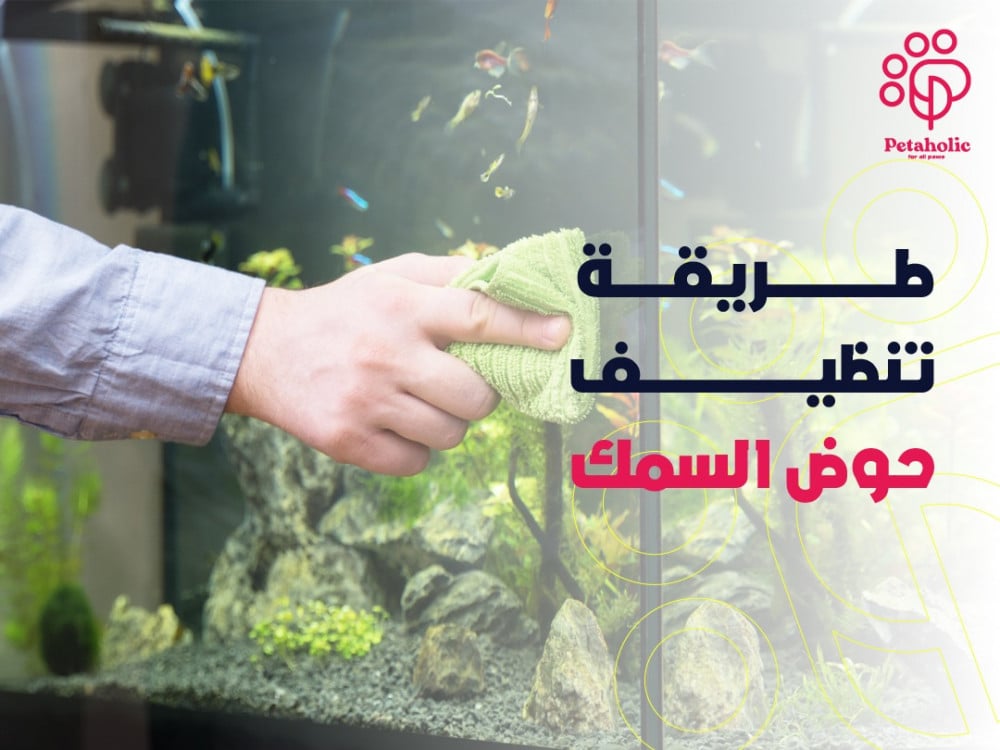
When some people discover that you keep fish, they are likely to imagine a crusty, algae-covered tank where you can barely see anything swimming in it. But with a few easy steps, you can keep your aquarium looking like a beautiful work of art. You can follow along with us how to clean a fish tank to have a fish tank like a pro. We, at Petaholic , have provided you with all the supplies you will need to achieve this goal.
What is the way to properly clean the fish tank and the easiest steps?
Here is how to properly clean the fish tank in the easiest steps:
before you start
It is best to keep the fish in the aquarium when you clean it. Removing the fish puts unnecessary stress on your fish, and you risk accidentally hurting them because catching them is more stressful than cleaning slowly around them. It is possible to keep your fish in the tank while you clean it because you do not need to empty all the water to clean the tank properly, so there will be plenty of water left for them to swim around in.
Replacing the water in the entire aquarium is also a bad idea because it will remove the beneficial bacteria that live in the tank and reset the nitrogen cycle, which can kill your fish. So if you clean your tank regularly, doing a partial water change is the best option. Also, when getting ready to clean the aquarium, it's okay to leave plants and decorations where they are. These only need cleaning when they start to look dirty.
Start at the sides to remove algae
To begin learning how to clean your aquarium, start by unplugging the heater and filter because these equipment do not work without water, and therefore can be damaged when running in dry air. You can then scrape the algae off the sides of the tank in order to keep a clear view of the fish, and this is done with an algae scraper. If the sides of the sink are made of acrylic rather than glass, a plastic scraper is recommended instead of a metal one. If you have a blade attached, it should be very easy to cut through any tough patches of algae. Just be sure not to catch any of the bottom rocks under the algae scraper, or you could end up scratching the glass or acrylic.
If algae grows on the lid of the tank, you can easily rinse it off, but don't use soap or it could harm the fish. Finally, if algae is covering your aquarium decor, rocks, or plants, try using a clean toothbrush to gently brush it off, either over the tank or in the aquarium.
Clean up the gravel and trim the plants
After you are done cleaning the sides, you can start gritting. You can use a siphon to clean dirt and other debris from gravel, also known as a gravel vacuum. You can also use the siphon to empty some of the dirty water from the tank. Remember to keep at least 50% of the water in the tank at all times to avoid removing all beneficial bacteria from the tank.
If you keep live aquarium plants, take this time to remove any dead leaves and prune off overgrown leaves. Also, if you have long-stemmed plants, you can easily propagate them by cutting a few centimeters off the tops and replanting them in the substrate. Finally, if floating plants cover the entire surface of the water, remove about 30% to 50% of them so the plants below get enough light and the fish get enough oxygen.
Empty the substrate if it is dirty
Take out your aquarium siphon and clean out about a third of the substrate. Move any trim or hardboard as needed, as debris tends to collect underneath. The siphon serves a dual purpose of not only removing fish waste, uneaten food, and dead leaves from the gravel or sand, but also emptying out old tank water and the excess nitrates in it.
Clean the filter to follow the proper aquarium cleaning method
The filter should be cleaned at least once a month. Many beginners think of a filter as a black hole where fish feces and waste magically disappear from the water! Indeed, filters are like trash cans that collect waste, but at the end of the day, someone is still responsible for taking out the trash and emptying it. In the same way, filters collect fish waste, but you should still clean them regularly to remove all contaminants before the filter gets clogged or floods.
If you have a filter that hangs on the back of the sink or a corner box, the easiest way to maintain it is to move the filter medium and wash it in the recently emptied bucket of sink water, again without soap. If you have a sponge filter, remove the sponge part and wring it out a few times in the bucket of old aquarium water.
Refill the water
At this point, you can finally refill the tank with fresh, clean water with the existing tank water temperature. Human hands can detect temperatures within a degree or two, so just adjust the tap until you feel the tap water is just as warm. Empty the old sink water bucket, and refill it with tap water. You can either add the dechlorinator in the bucket, or directly into the tank and add the substrate you cleaned.
Turn on the equipment
Even though you've spent all this time cleaning the tub, it probably looks dirtier than ever with all those particles inundating the water. Not to worry, turn the heater and filter back on, and within an hour or so, the debris will have settled or been sucked up by the filter.
Wipe the glass
To get that crystal clear finish, wipe the outside walls of the tub with a cleaner safe for glass and acrylic to remove any water spots and smudges. Also, clean the dust collected on the lid, light and sink stand. Now you have a truly Instagram-worthy aquarium to impress your friends and family!
Among the distinctive products that we offer at Petaholic for cleaning fish tanks, which you cannot do without because they are safe on glass and acrylic:
Things to watch out for and keep in mind when cleaning an aquarium
How often you will need to follow the above aquarium cleaning method depends on the size of the tank, the number and species of fish, and the filtration system you have. There is no need to clean the fish tank every day, unless you see the fish acting strangely like gasping for air or moving slowly, consider doing a partial water change. Also, if you have a medium sized aquarium or a large aquarium, a weekly partial water cleaning can be very beneficial in keeping the tank clean and the fish healthy. Here are some general rules to help you decide how often to clean your fish tank:
- Watch your fish to make sure they are behaving normally and not gasping for air. If it is, it may be a sign that you need a partial water change and tank cleaning.
- Fish depend on you for their survival and happiness, so spend some time watching them and getting to know their routine to know when they are acting strange outside of it.
- If the water in your aquarium appears cloudy, this is an indication of a water problem and should be addressed with a partial water change immediately.
- Watch the water evaporate.
- It's a good idea to check all the equipment in your aquarium twice a year to make sure the filters, pumps, and lights are in good condition.
Some of the best filters we have at Petaholic to keep your aquarium clean include:
After all, a clean aquarium looks great, and provides a nice home for your fish to stay happy and healthy throughout their lives. By following the steps we mentioned in this guide, you will know how to clean your fish tank as easy as possible. You can also buy all the necessary equipment at the best prices from Petaholic.
You may also be interested:
- What are the basics of caring for an ornamental fish tank?
- What are the most common diseases of goldfish fish?

